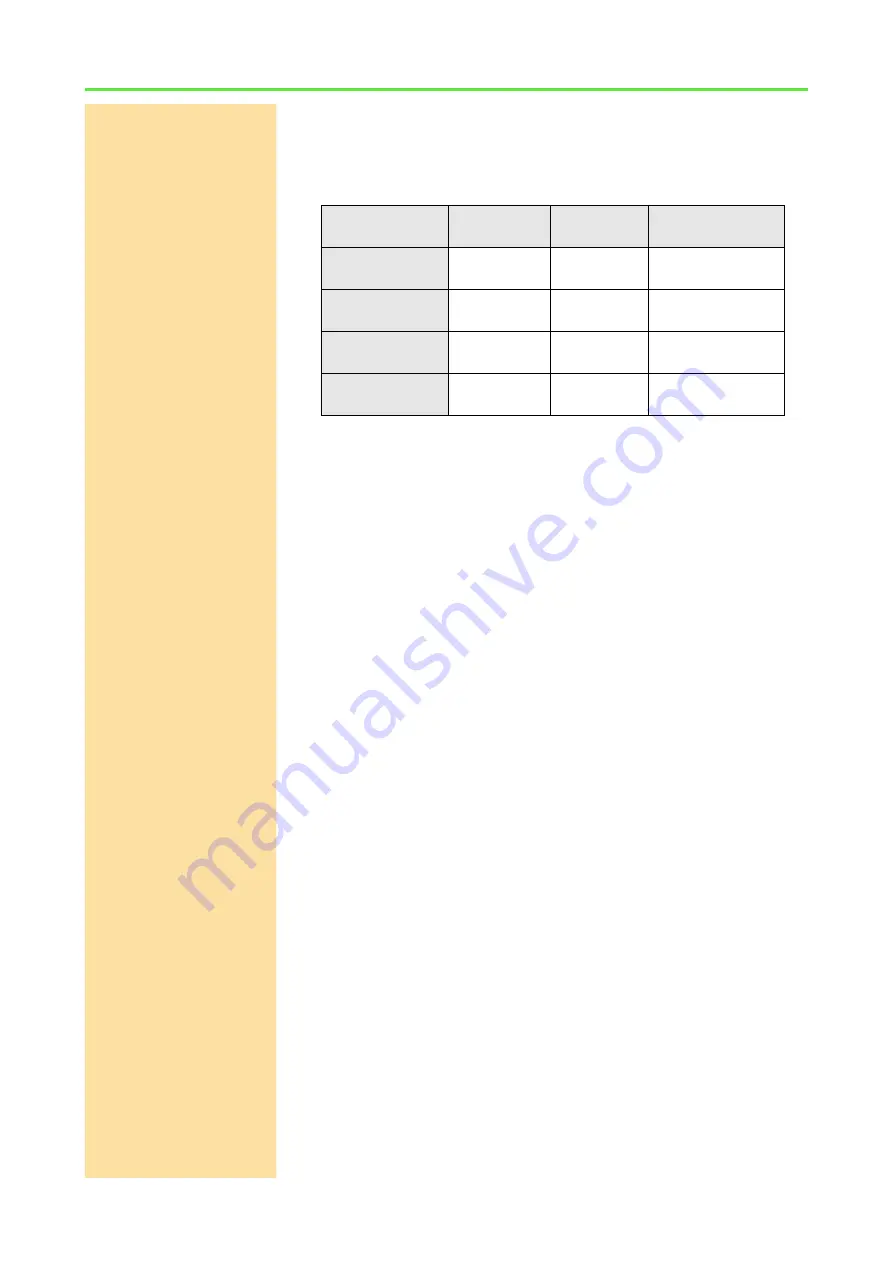
Pro II: Analog Input Modules
Pro II-AIn-F-8/16 Rev. E
ADwin
82
ADwin-Pro II
Hardware, manual Dec. 2018
5.5.9 Pro II-AIn-F-8/16 Rev. E
The analog input module Pro II-AIn-F-8/16 Rev. E has 8 Fast-ADC of 16 Bit
and 8 differential inputs.
The module can be ordered in the following variants:
The variants Pro II-AIn-8/18-xxx-LP contain an input filter, a 4th grade low pass
of type Typ Butterworth. According to the variant the frequency is set to 10kHz
or 50kHz.
The inputs are provided on shielded LEMO sockets (1-pole or 2-pole, CAMAC
European norm, see fig. 67), BNC sockets, or 37-pin D-Sub connector.
The module’s converters run with a clock rate of up to 4MHz. Since revision
E04, module memory enables to buffer data–especially with burst sequences.
The module Pro II-AIn-F-8/16 Rev. E has an input voltage range of ±10V and
a software selectable gain of 1, 2, 4 or 8. The adjustment of gain and offset is
done by software (see chapter 6 "Calibration").
Since revision E04, the module provides several operation modes for convert-
ing analog signals:
– Single measurement: You start each conversion manually, query the
measurement value and processes it in the
ADbasic
program.
– Single burst sequence: The
ADbasic
program starts a compelete burst
measurement sequence, that is a defined number of single measure-
ments.
– Continuous burst sequence: The
ADbasic
program starts a burst mea-
surement sequence, that continuously does single measurements until
the sequence is stopped. The data is stored in a fifo-like memory.
As an alternative to the operation modes above, the module can perform a
simultaneous conversion on all channels using a sequence control. This dis-
burdens–compared to single measurements with the instruction
P2_ADCF
–the
processor module, which only reads and processes the converted measure-
ment values. The conversion can be either triggered periodically with regular
time delays or by external event signals.
As an option, the module can return the average of 2…32 measurement values
instead of simple measurement values. In this case, the selected number of
measurement values is converted before the average can be calculated.
The module can control a lower and an upper limit for each channel separately.
The module gathers the maximum and the minimum value for each channel
and provides the values per software instructions.
Burst Sequence
The module processes burst sequences independent from the processor mod-
ule of the
ADwin
system. The measurement values–number and measuring
rate to be defined ahead in the program–are stored in the burst-memory of the
module. The processor module then reads the stored values (even during a
no filter
filter 50kHz
filter 10kHz,
range ±30V
LEMO 1-pole
AIn-F-8/16
AIn-F-8/16-
LP50
AIn-F-8/16-
LP-30V
LEMO 2-pole
AIn-F-8/16-L2
AIn-F-8/16-
LP50-L2
AIn-F-8/16-
LP-30V-L2
D-Sub
AIn-F-8/16-D
AIn-F-8/16-
LP50-D
AIn-F-8/16-
LP-30V-D
BNC
AIn-F-8/16-B
AIn-F-8/16-
LP50-B
AIn-F-8/16-
LP-30V-B
















































